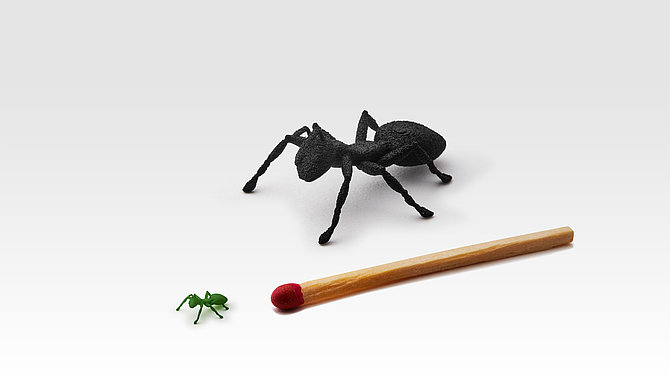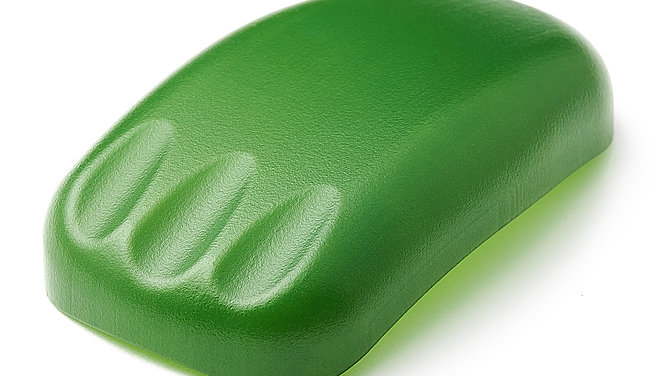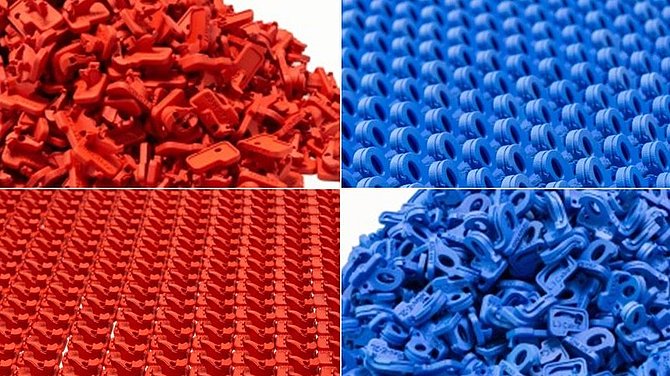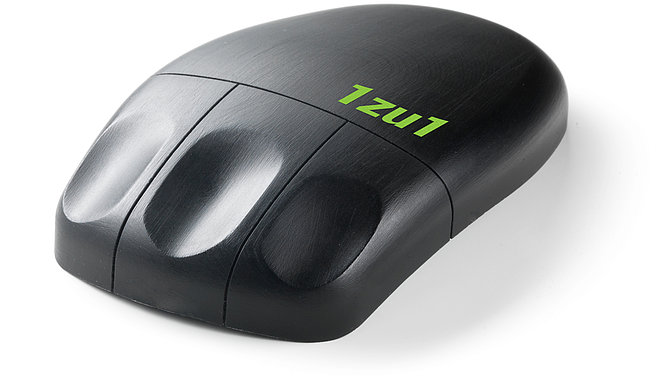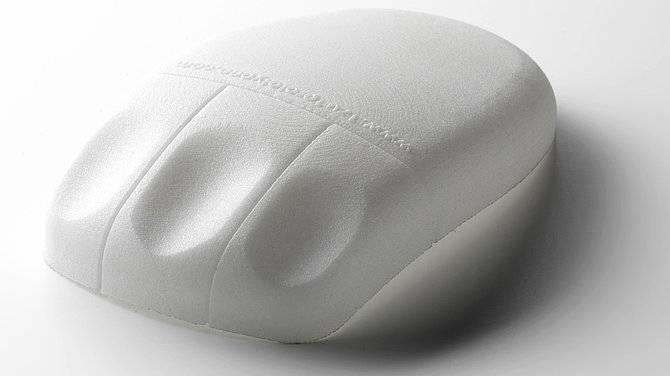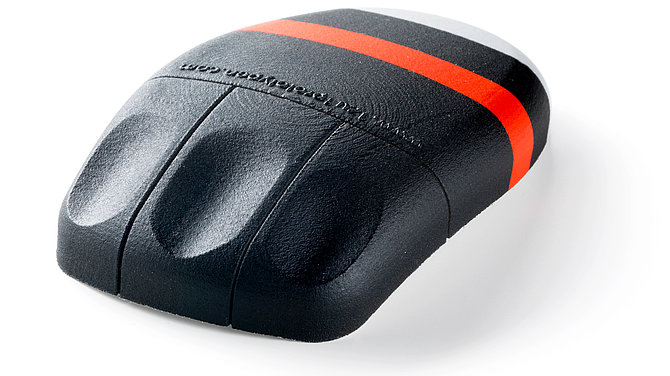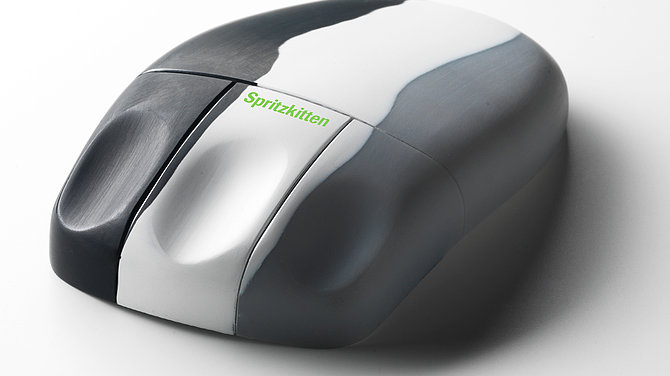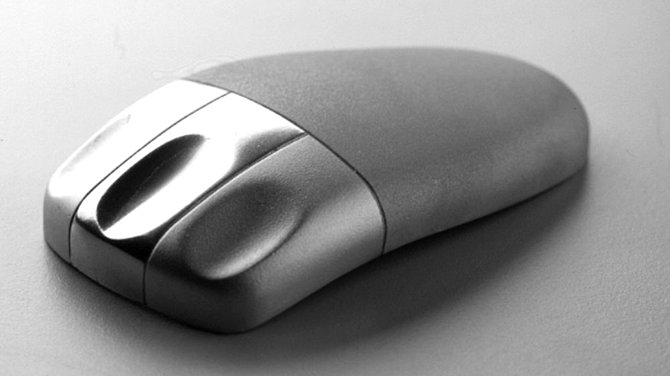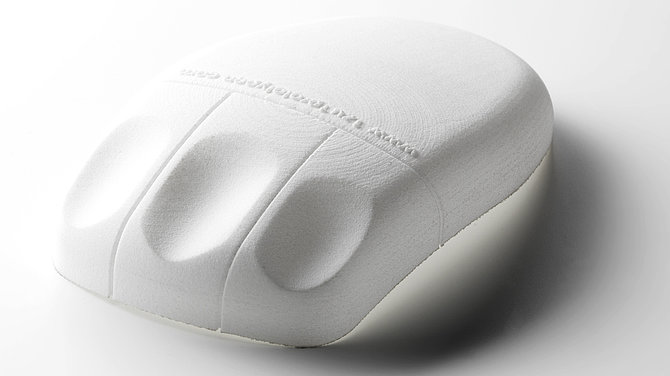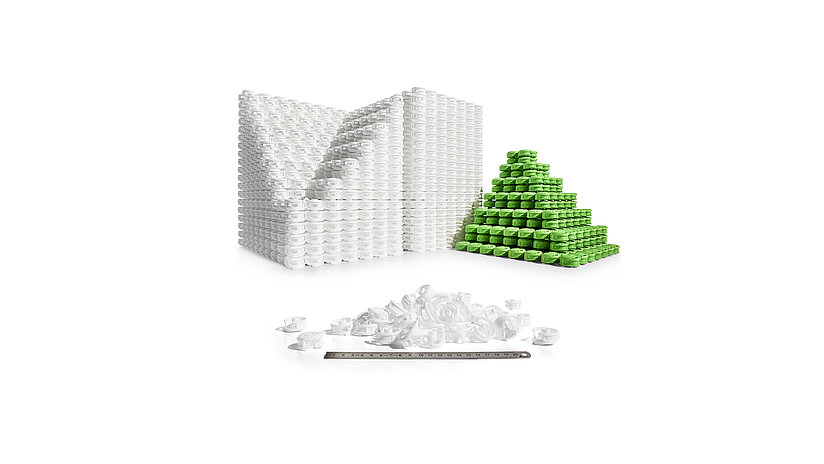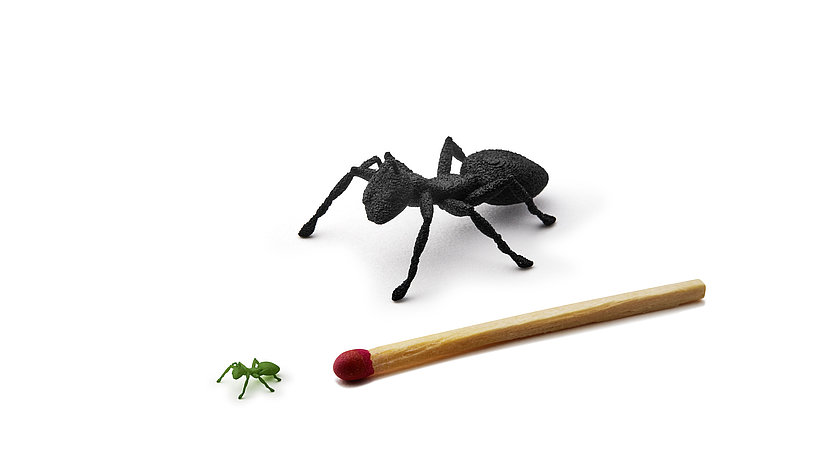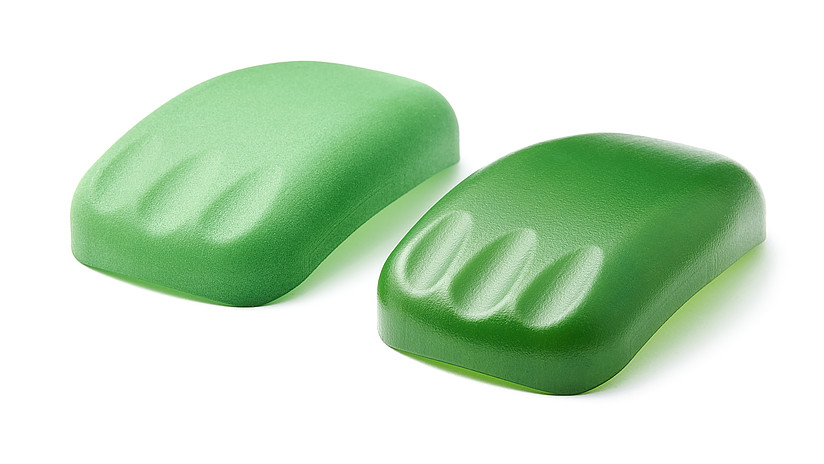Selective Laser Sintering (SLS) is a generative layer construction process and supports product development with its speed. The model is constructed via local sintering or melting of layers of powdered material using focused laser radiation. In this way, any three-dimensional geometries can be created without supports. With SLS, detailed functional prototypes or series can be produced very quickly, starting from batch size 1. This leads to an accelerated product development, a reduction in risks and a shortening of time to market.
![[Translate to English:] [Translate to English:]](/fileadmin/_processed_/e/c/csm_1zu1-Ameise-Header_a359269e0e.jpg)
Selective Laser Sintering (SLS) With the materials PA12, PA12GB, PA12FR, PA12CF


Materials
Quality materials and perfectly maintained equipment guarantee the highest level of form and fit accuracy for your parts. Our high-tech equipment receives only the best manufacturer materials, which have been tested by us for a long time. Currently, you can choose from the laser sintering materials polyamide, polyamide with glass reinforcement, polyamide flame retardant and polyamide with carbon fibers. Other special technologies available to you include flexible SLS and FDR technology for particularly detailed applications.
| Polyamide EOS PA 2200 | Polyamide EOS PA 3200 GF | Polymide EOS PA 2210 FR | Polyamide ALM PA 603-CF | Polyamide EOS PA 1101 | |
|---|---|---|---|---|---|
| SLS | In comparison: SLS-FDR | ||||
| Hardness [Shore D] | 75 | 80 | 75 | ||
| Bending modulus of elasticity [MPa or N/mm²] | 1700 ±80 | 2900 | 2300 | 9170 | |
| Tensile modulus of elasticity [MPa or N/mm²] | 1900 ±50 | 2850 ±350 | 2200-2500 | 7900 | 1600 |
| Elongation at break [%] | 20 ±3 | 7 ±2 | 3-7 | 4 | 30-40 |
| Vicat softening temperature [°C] | 165 ±2 | 166-179 | |||
| Density [g/cm³] | 0.93 | 1.22 | 1.06 | 1.10 | 0.99 |
| Tensile strength [MPa or N/mm²] | 50 ±1 | 49 ±2 | 38-46 | 85 | 48 |
| Notch impact strength [kJ/m²] | 3.4 ±0.5 | 4.2 | 8.4 | 6.5 | |
| Impact strength [kJ/m²] | 35 ±8 | 21 | |||
| Flammability (ignition time 12s) | 1.7 mm + 2.0 mm Test passed | ||||
| Smoke density | 1.7 mm + 2.0 mm Test passed | ||||
| Burning behavior | 1.1 mm / HB 2.0 mm* / V-O | ||||
| Toxicity | 1.7 mm + 2.0 mm Test passed | ||||
| Glass ball weight fraction in [%] | 40 | ||||
| Appearance/color | White | Grayish | White | Darkgrey | Natural |
| Colorability | Excellent | Limited, not RAL | Possible** | Limited, only black | Excellent, not RAL |
| Chemical smoothing | Excellent | Excellent | Possible** | Excellent | Excellent |
| Material datasheet | Materialdatasheet (Only german) | Materialdatasheet (Only german) | Materialdatasheet | Materialdatasheet | Materialdatasheet |
| Additional certificates | Biocompatible Food contact | Biocompatible |
The material data have been verified by the Fraunhofer Institute or are based on the manufacturer's data sheets.
* In internal tests by the material manufacturer, UL94 V-0 was already achieved at a wall thickness of 2.0 mm. Officially (Blue Card) UL94 V-0 is confirmed at 3.0 mm wall thickness.
** Possible loss of flame retardancy.





Your advantages
- Fast, flexible, cost-effective and tool-free production from your data
- Materials suitable for series parts (especially polypropylene)
- Complete design and construction freedom for implementation of complex structures, as well as functional elements
- Cost optimization of prototypes, variants, small series, individualization
- High repeat accuracy and assured properties due to top material expertise
- In combination of chemical smoothing and heatset impregnation close to serial product
Advice tailored to your needs
At 1zu1, we help you find the perfect solution by combining the best technology with a wide range of materials. And this is implemented in the shortest possible time and with the highest technical precision.
Challenge us. What can I do for your project?
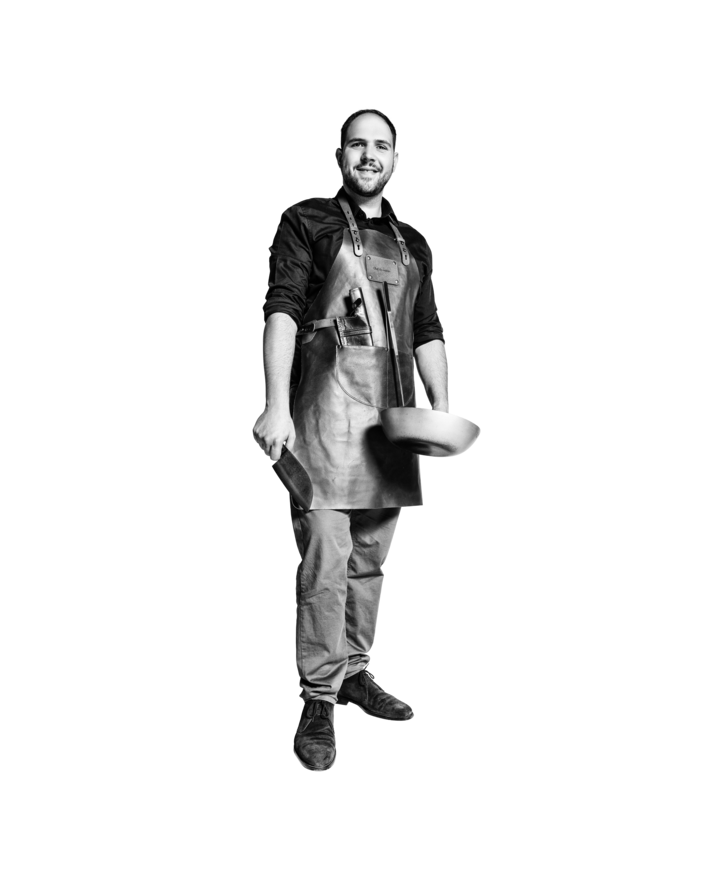
Sebastian Mathies
1zu1sales
business developer
T +43 5572 33 333-834
sebastian.mathies@1zu1.eu
»1zu1prototyping, that's like fast food on the level of top gastronomy. And if necessary, with a lot of portions.«
Sebastian Mathies knows that the eye also eats. That's why he chooses the right ingredients, the right technology and the necessary finishing steps. The result: prototypes to your taste.
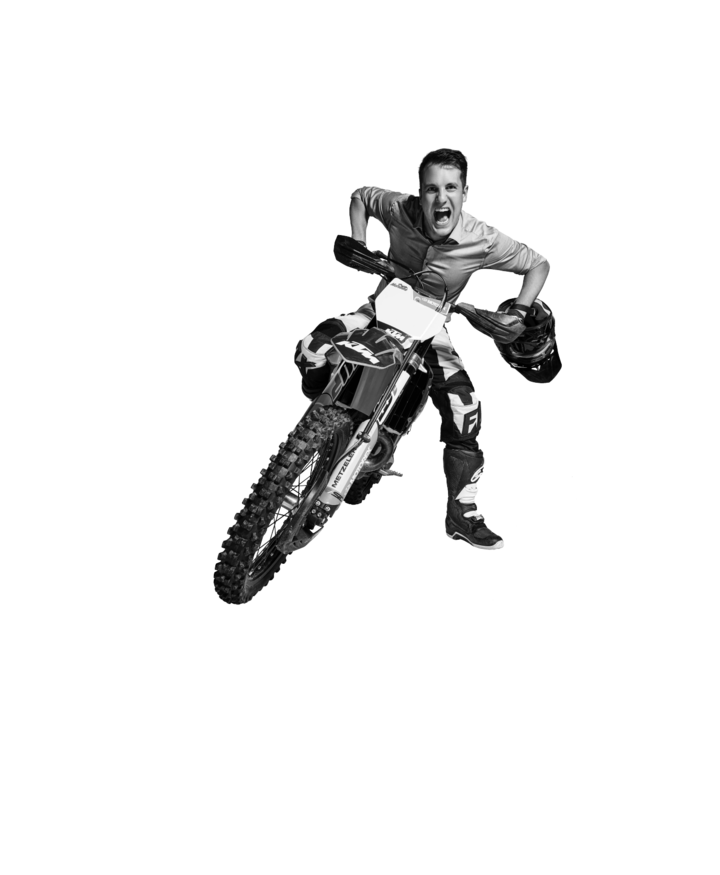
Stefan Rädler
1zu1sales
area manager Germany
T +43 5572 33 333-842
stefan.raedler@1zu1.eu
» For perfectly implemented ideas, I propose new technological paths with my customers.«
In motocross and enduro, Stefan Rädler is on difficult paths.
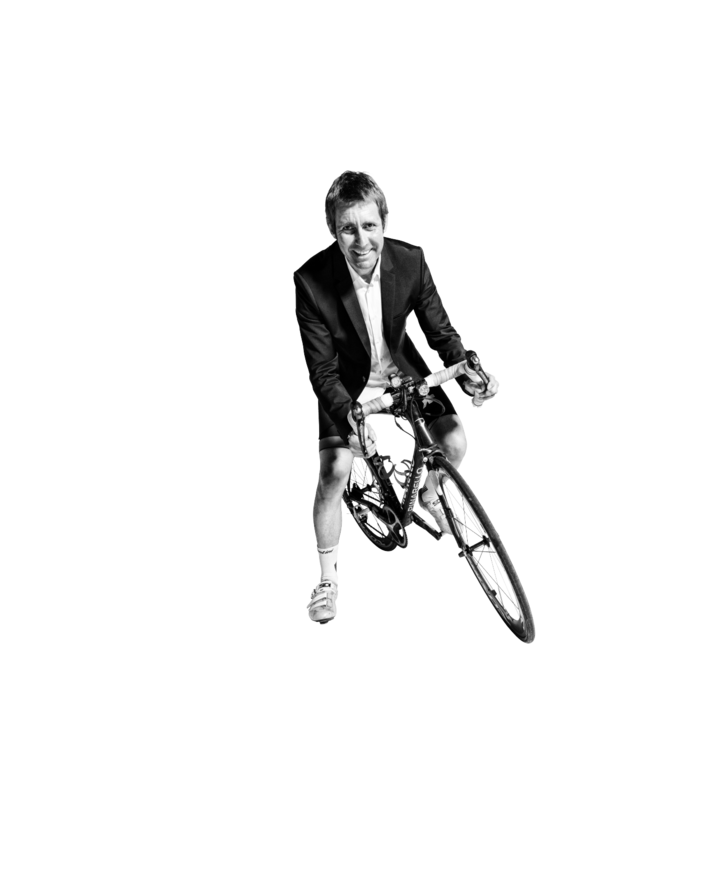
Klaus Pichler
1zu1sales
area manager Austria
T +43 5572 33 333-838
klaus.pichler@1zu1.eu
»As a cyclist, I know that excellent technology is the key to speed – and therefore to success..«
Klaus Pichler spends his free time in the saddle – he and his road bike conquer Austria’s mountains with endurance and the right pedal stroke.

Sebastian Mathies
1zu1sales
business developer
T +43 5572 33 333-834
sebastian.mathies@1zu1.eu
»1zu1prototyping, that's like fast food on the level of top gastronomy. And if necessary, with a lot of portions.«
Sebastian Mathies knows that the eye also eats. That's why he chooses the right ingredients, the right technology and the necessary finishing steps. The result: prototypes to your taste.
Surface finishes
Here at 1zu1 we can treat master models, duplicated parts and serial parts with special surface techniques according to customer requirements . We finish the prototypes and serial parts via EDM texturing, high gloss, special effects (metallic, silver, partial) or subsequent varnishing.
We can also accommodate individual color samples or color requests (RAL, NCS, Pantone). For this purpose, we offer a wide range of surface treatment processes in manual finishing, depending on the initial technology. Each process can be applied individually, in combination, partially or fully, according to RAL or NCS.
The possibility of individual printing, laser marking as well as hot foil stamping is also available at 1zu1 in-house. Put us to the test!
Design options and guidelines
Selective Laser Sintering is typically used for components with hard-to-reach areas, functional film hinges and undercuts. To enable us to manufacture these objects precisely and without problems, we have compiled a series of technical guidelines to support your design process.
Systems
At 1zu1
we currently have 13 SLS machines for plastics with different materials at your disposal. We are constantly investing in new machine technologies. On all machines we realize build layers from 40 - 100 µm and wall thicknesses from 0.22 up to 0.65 mm. Previously visible layers disappear more and more, clean and smooth sidewalls are created, fine or large parts can be produced even more accurately. We start daily with all materials. Our standard lead times are 3 days. Larger dimensions or quantities on request.
| SLS systems | Type designation | Construction layer thickness | System construction space | Wall thickness | Materials |
|---|---|---|---|---|---|
| EOS | FORMIGA P 100 | 100 µm | 200 x 250 x 330 mm | 0.45 mm | SLS Rubber |
| EOS | FORMIGA P 110 | 100 µm | 200 x 250 x 330 mm | 0.45 mm | PA12, PA12 GB |
| EOS | FORMIGA P 110 Velocis | 100 µm | 200 x 250 x 330 mm | 0.45 mm | PA12, PA12 GB |
| EOS | EOS P 396 | 100 µm | 340 x 340 x 600 mm | 0.65 mm | PA12, PA12 GB, PA12 FR, PA 603-CF, TPU |
| EOS | EOS P 500 | 100 µm | 500 x 330 x 400 mm | 0.5 mm | PA12 |
| EOS | FORMIGA P 110 FDR | 40 µm | 200 x 250 x 125 mm | 0.22 mm | PA11 |
In the prototal group
In SLS, a wide range of different equipment and materials are available to our entire customer network. The number of 60 SLS machines is divided into 20 EOS P1xx -, 20 EOS P3xx -, 5 EOS P5xx - and 15 EOS P7xx machines. The material variety ranges from standard materials to special materials. We are proud to be part of this international group of companies.
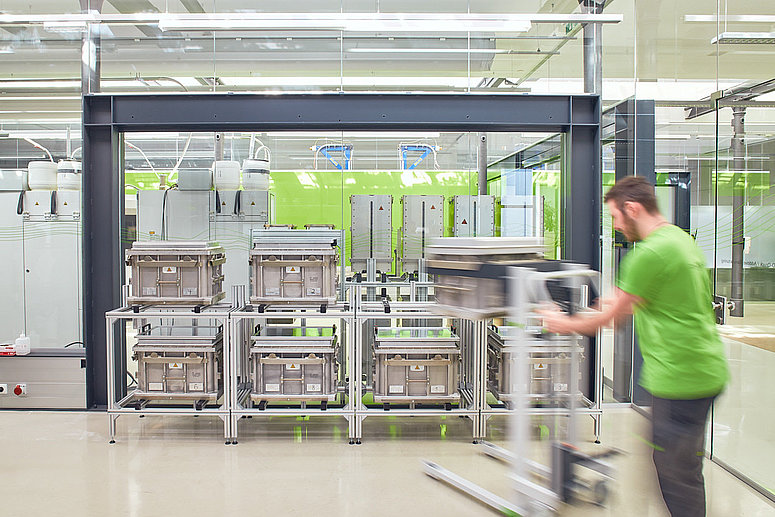
![[Translate to English:] Selective Laser Sintering flexible (SLS)](/fileadmin/_processed_/c/5/csm_20230607_DAT_0001_Original_5d31893bd8.jpg)
